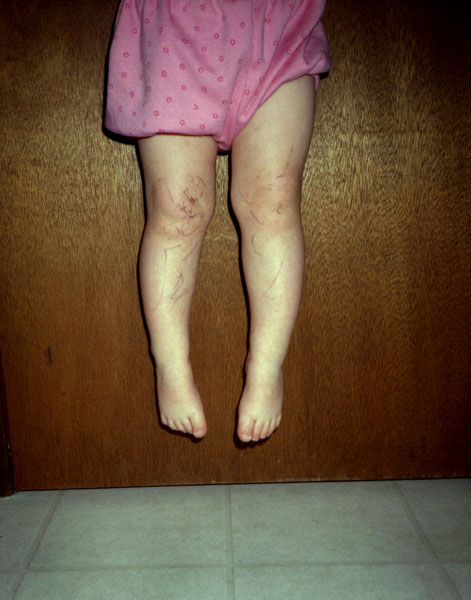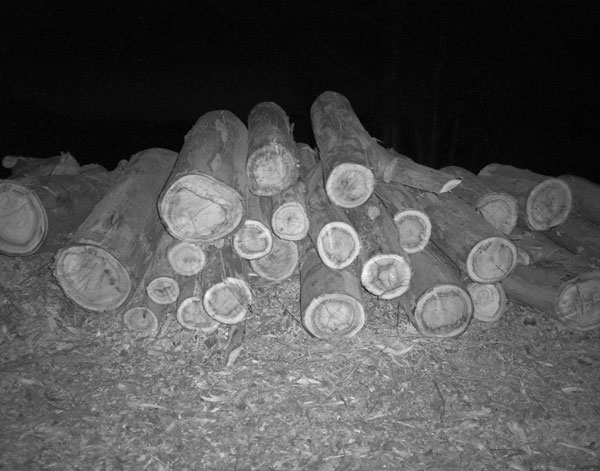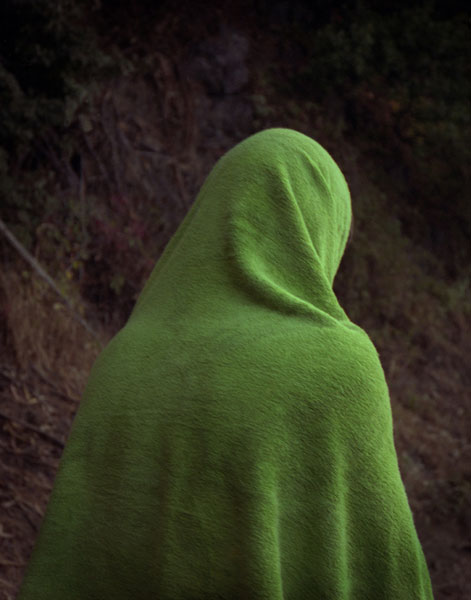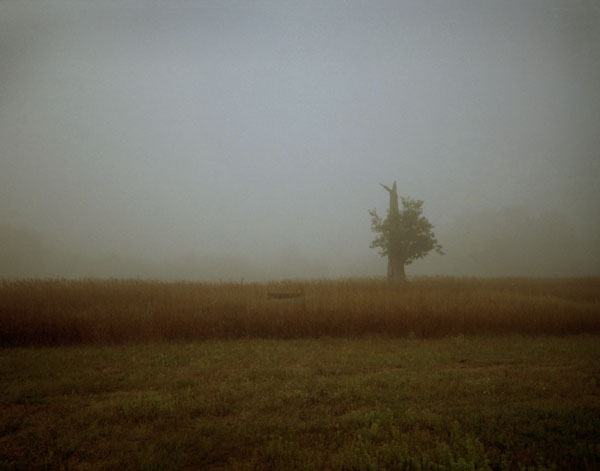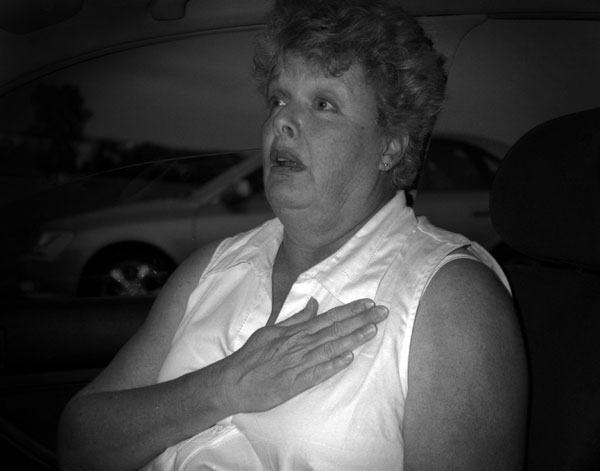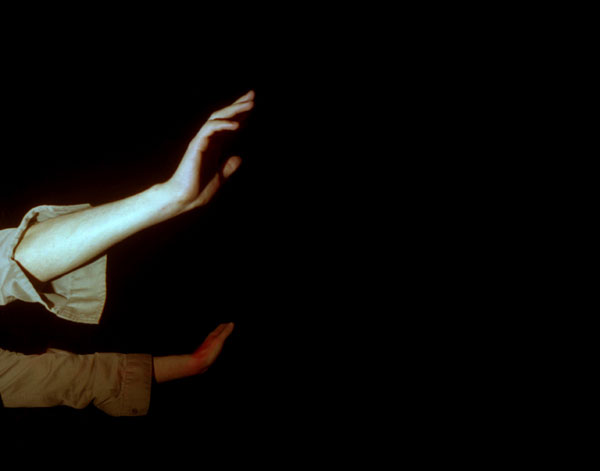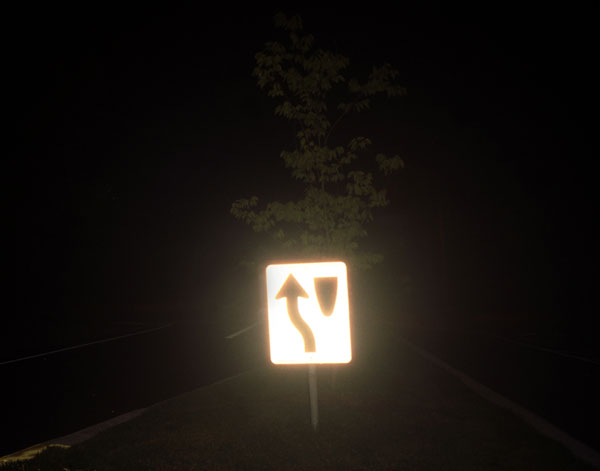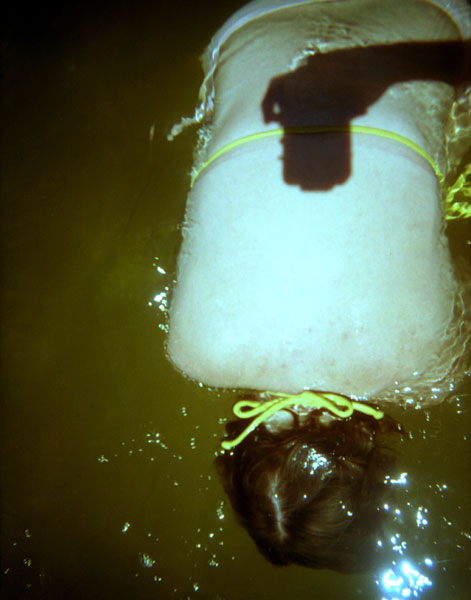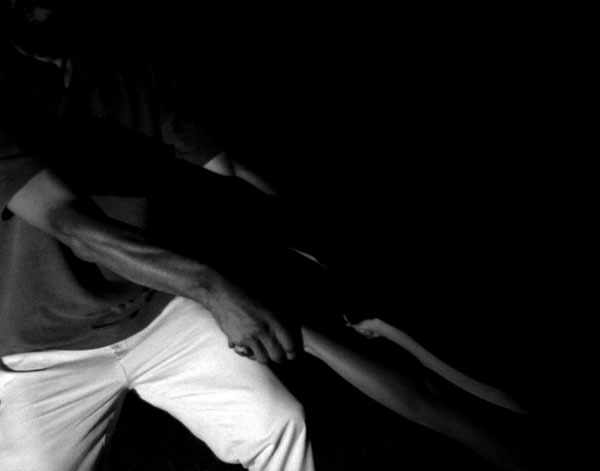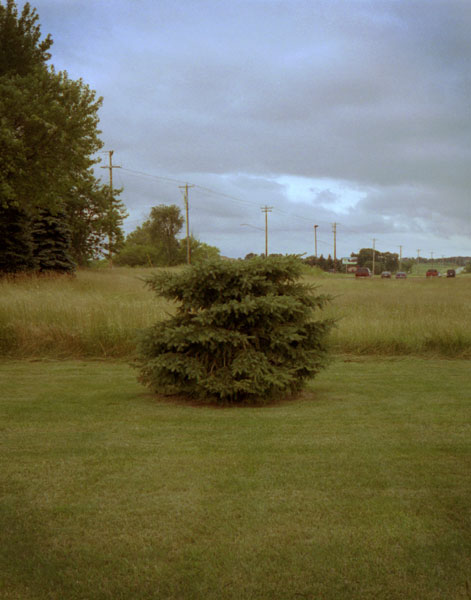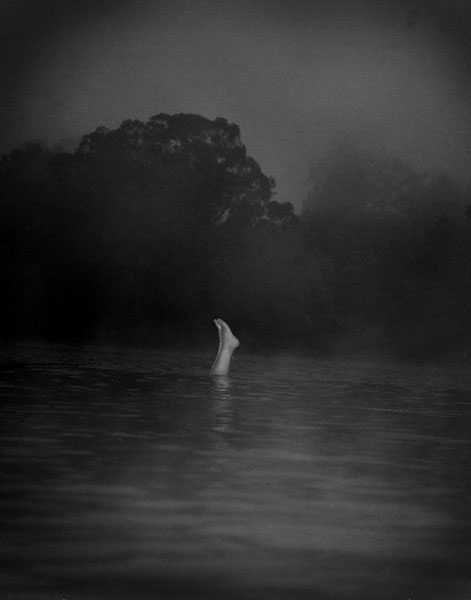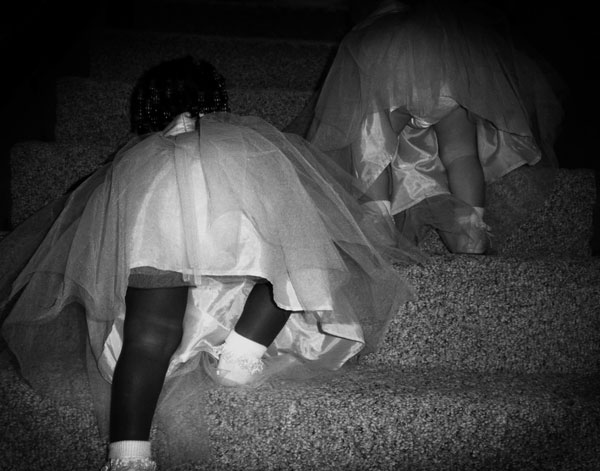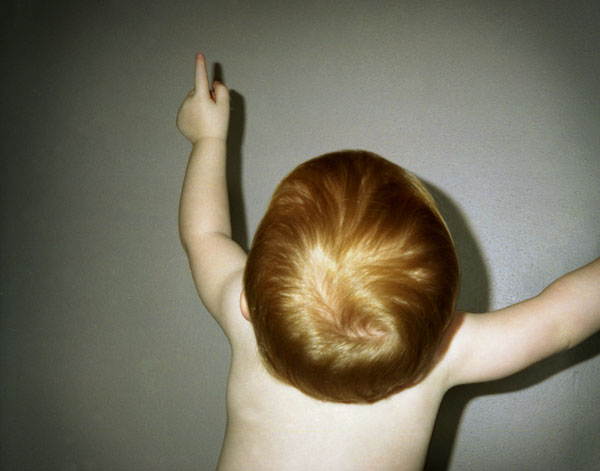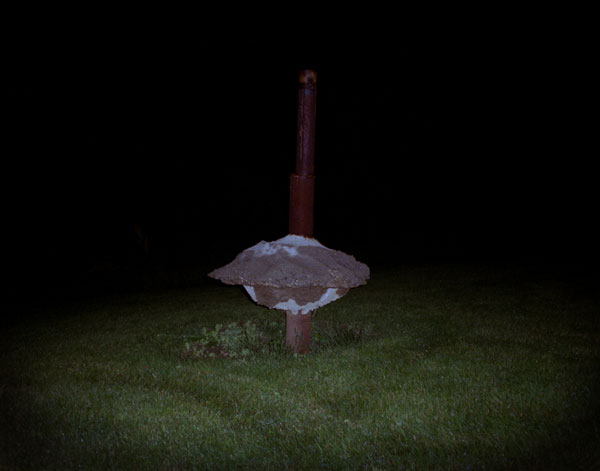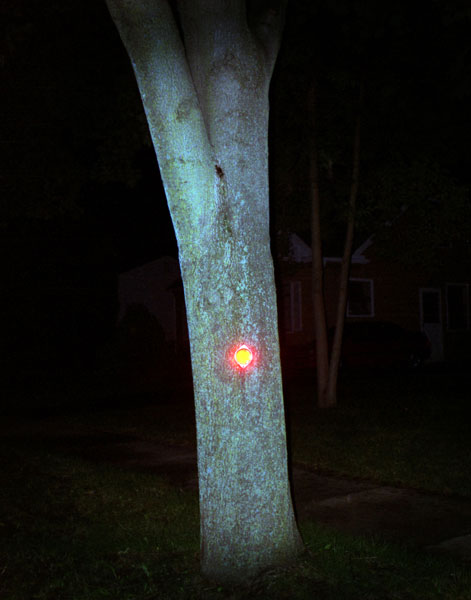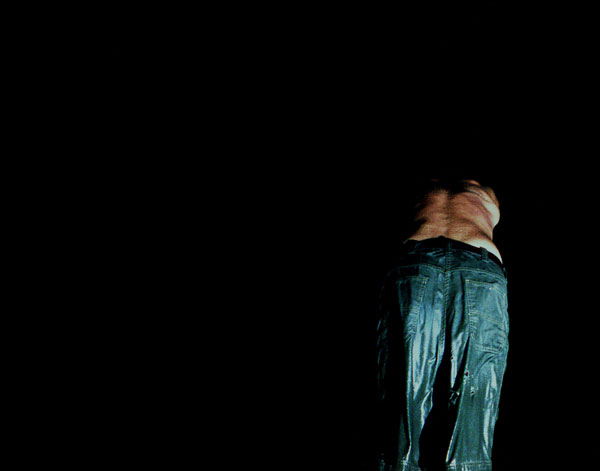good by angels
 Ak47 interview with Paul Schiek by David Vincent D'Andrea
Ak47 interview with Paul Schiek by David Vincent D'Andrea
Q. Can you talk a bit about your process for creating the book, "good by angels"?
A Most of those photos are from last summer. I was just shooting everything I Was doing, and I knew I was going to start making the book at the end of summer. Once summer was over I began thinking about the images, and piecing it together.
Q. So the book was the only parameter you had going into it?
A. Exactly. I always make pictures with the intention that they will be printed and viewed in book form, or I should say I make images with the intention that one image will play off of another. I rarely try to think of the singular image.
Q. Why the book format?
A. I give the same answer to this question every time I answer it and it never changes for me. It really goes back to being a kid and living in a town with very little resources. I wasn't into reading so all I would do is look at magazines in the mall. I never saw an art book or a gallery. I would just go into Waldenbooks or whatever and look at the pictures in the magazines for hours. It's like this endless pool of photographic images. Good and bad. I still do that to this day. When it came time to start making images on my own I always just thought of them as going in magazines, not on walls or in a galleries. So it's only natural for me to show my photos in this way. So I make these books and I do work for magazines.
Q. This makes sense with what we've talked about before, how you tend to treat the book as an object. It's like you're thinking about it in the same way as a band who puts out a new record.
A. exactly. The book, to me, is the work. Generally photo books are interpretations of fine printed photos. I always think of the book first, and if I have a show, its an interpretation of the book. I have always looked to music as my main source of inspiration. For me, looking at records is the equivalent of reading or looking at a book. I?ve done it my whole life. from the cover to the gatefold to the back, they are all like pages. when I work with people making artwork for records, I totally treat the materials the same way as I would a book. so every detail is important. Texture is a big one. The music has to be pretty exceptional for me to keep listening to it if the artwork is shit?it just totally bums me out when there is no link between the music and the visual element of a record?.
Q. Are the books documentary?
A. I will say no. Its weird b/c all I am doing is documenting what I'm doing and later extracting moments and stringing them together to make a new picture'so in one sense the beginning stage is documentary but the end product is not at all?most of those images are totally unrelated, beyond the fact that I am making them. One can be from a wedding, the other a funeral or swimming at night. Later I'll piece them together. My process of making images is just one of creating a library of symbols or indicators ?I go back to rolls of film from years ago and use an image of a dead rabbit, not because I think dead rabbits are super photos but because a dead rabbit next to say a sunset or pile of vomit is possibly interesting. I'm not really interested in dead rabbits, you know?
Q. Isn't it inevitably going to be a documentation of a little chunk of your life? When I look at photo books, it may just be my nature, but I always look for a narrative. Especially when there's no text, I Automatically think it's totally about the person behind the camera.
A. I don't know, to be honest. It varies based on the viewer. A lot of people Will just look at the books and pick out individual things about each image And comment on it. Dead rabbit. Done. And some will just link them and at the end be like," oh I feel sick" or " I feel happy".
Q. So it has little to do with the single image. It's the book as a whole.
A. I like to think it's about the whole...for sure. I don't want to shock people. ? I?m not at all trying to make people say, "oh my god! that's a crazy photo of a mohawked 90 year old getting laid by a dog??" In many ways I'm trying to do the opposite. I don't have the headspace to deal with the way our culture deals with images. Magazines and television have such shock value placed on them.. people are waiting to be hit again over the head?. I don't want to do that? Look at a typical music video. No long shots on music videos? everything is like a hundred cuts a video. Its just..bam ! next . bam! Next?I really am constantly battling with myself to see how little information I can give people, how much visually I can take away and still make it engage the viewer. Its my tendency to want to say too much, so my goal is to be able to make a book with no text?with very little visual information. I tried to do that in good by angels by using black space. I added solid black pages. I'll even take out stuff in the background if I'm not feeling it, neighbors little kid? crop. (laughs)
Q. The "oh my god, that's a crazy photo" thing is pretty prevalent in a lot of the photography I've seen lately. A lot of weight is being put on the "one photo". It seems like you're trying to do the opposite. It kind of comes full circle, because after spending time with each of your photos, they become so surreal to me. Some even approach a sort of shock that creeps up on you later, after the image has lived in your head for a while.
A. To hear you say that is a compliment. For the reasons I stated just now... I really am trying to devalue the photo for myself. Trying to think of it like I said like a signpost or an indicator .like its just a picture I have manipulated of a little girls legs...its not much more then a way for me to direct the viewer, you know? It's just a manipulation of language like a musician would do. And I totally want to be doing what they do , but cant so I do this?
Q. Most of the photos in Good By Angels are shot at night?
A. That's pretty much due to the fact that I am just sort of a nocturnal person... Its quieter at night, no one's around. You can slip in and out of places with out people seeing. Its generally just more fun at night?.
Q. The mood for this work is really set by so much dark space. The work, seems morbid at times.
A. Could be, Its sort of like everything, its starts off with such great intentions?intentions of total love and goodness and it can turn ugly and sour pretty quickly? that's just life? life can be dark huh? ( laughs) everything I do lately seems to be about contradictions and opposites. Good vs. bad or dark vs. light. It's really a driving theme for me in my life right now?.So many people were disturbed about the photo of the little girls dangling legs. They thought it looked like she was hung.. but in conjunction with the word ?angel? in the title, to me, she seemed weightless. As if she is taking off upward, jumping up or whatever, not coming down. I like having that duality in photos. Letting people who are hysterically laughing look as though they are in pain or vice versa?? ambiguity I guess?
Q. Yeah, and the simple dualities get more and more complex every time I pick up the book. It's powerful- the 2nd, 3rd, 4th read on an image-I'm really into that. As soon as you mentioned the girl's dangling legs, and whether she was ascending or descending, I thought of the photo of the pond at night. A diver's feet are sticking up out of the water.
A. Yeah ... same thing. I think in retrospect I can say that this book is about three things.. the same three things I have questioned my whole life: god, love and death........the whole book is about this upward and downward-ness. all the bullshit I have wrapped up in that. ideas of heaven and hell, you know ? Western world stuff.....
Q. What are you working on now?
A. The next book I'm doing, which comes out hopefully in October, is Tentatively called ?how many humans does it take to change a light bulb?? Visually, its sort of the opposite of good by angels. its all these blown out photos, way too much light, which in my opinion can be equally as unsettling, there is also a lack of information, things are unclear because there is too much light. Its drowns clarity out of the photo.
About Paul Schiek
Paul Schiek will someday build his own house. For now, he proudly calls the city of Oakland his home. In 2003 he founded "These Birds Walk", the moniker under which he has published three of his own photo books. His commercial work has appeared in magazines such as Big, Slap, and Vice, and on numerous record albums. Paul attended the California College of Arts and Crafts, where he received his BFA in photography. He was born in Fond du Lac, Wisconsin, 27 years ago.
Contact
Stephen Wirtz GalleryFor books by Paul Schiek, please visit:
Website

